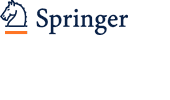
Acoustic Sensing Techniques
for the Shallow Water Environment - Inversion Methods and Experiments
A. Caiti, N. Ross Chapman, J.-P. Hermand and S.M. Jesus (Eds.)
Comments: address your purchase orders to Springer.
Ref.: Springer, Dordrecht, (ISBN-10 1-4020-4372-4),
The Netherlands,
2006.
Abstract: This volume contains the collection of papers from
the second workshop on Experimental Acoustic Inversion Techniques for
Exploration of the Shallow Water Environment. The workshop theme
followed the original concept of the first workshop, held in Carvoeiro,
Portugal, in 1999, i.e., to focus on experiments and experimental
techniques for acoustic sensing in the shallow ocean. More than
forty leading international scientists were invited to meet in the
picturesque town of St. Angelo on the island of Ischia, in June 2004,
to discuss progress in the application of new experimental techniques
for exploration and assessment of shallow water environments. Acoustic
techniques provide the most effective means for remote sensing of ocean
and sea floor processes, and for probing the structure beneath the sea
floor. No other energy propagates as efficiently in the ocean:
radio waves and visible light are severely limited in range because the
ocean is a highly conductive medium. However, sound from breaking
waves and coastal shipping can be heard throughout the ocean, and
marine mammals communicate acoustically over basin scale distances.
The motivation for developing and improving acoustic techniques for
shallow water applications remains as strong as ever. Near coast
and inshore environments worldwide are critically important habitats
for many ecologically, commercially, and socially important
species. They are also rich with hydrocarbon and other mineral
resources. At the same time, these areas house nearly 60% of the
world’s population and generate approximately 25% of global primary
productivity. Pressure from industrial activity in the coastal
cities, development of off shore resources, international and local
shipping traffic and even recreation continues to threaten the coastal
shallow water environment.
The papers in this book indicate a high level of research interest that
has generated significant progress in development and application of
experimental acoustic inversion techniques since the last
workshop. The applications span a broad scope in geoscience, from
geophysical, biological and even geochemical research. The list
includes: estimation of geotechnical properties of sea bed materials;
navigation and mapping of the sea floor; fisheries, aquaculture and sea
bed habitat assessment; monitoring of marine mammals; sediment
transport; and investigation of natural geohazards in marine
sediments. Several papers reveal progress in using high frequency
acoustic backscatter to image objects on and beneath the sea floor, and
generate data bases that combine bathymetry with non-acoustic
information to provide comprehensive habitat maps of features such as
eel grass. A new nonlinear acoustic technique is reported for
detecting and quantifying the amount of gas in shallow marine
sediments. Significant progress is reported in a series of papers
related to the development of new techniques for estimating geoacoustic
properties of the sea bed by inversion of acoustic field data.
Inversion techniques are described here that make use of natural sound
sources in the ocean, and also novel experiments that use aircraft and
ships as the sound source. The same inversion techniques are also
being used for passive detection and tracking of marine mammals, using
a new autonomous experimental recording system. A common feature
in all the inversion techniques is the inter-relationship of diverse
features and processes that affect sound propagation in the
ocean. An inversion for seabed properties cannot ignore the
effect of processes in the water column; uncertainty in one parameter
of the environment leads to errors in the estimates of another.
Perhaps the best example of this relationship is seen in matched field
inversion methods which require explicit understanding of the sound
propagation. As was the case in the previous workshop, the
second workshop brought together researchers from diverse but
fundamentally overlapping interests. The collected papers in this
volume provide a comprehensive representation of current research
efforts and developments, together with survey papers critically
reviewing the progress made in the past years and the most promising
trends for future research.
